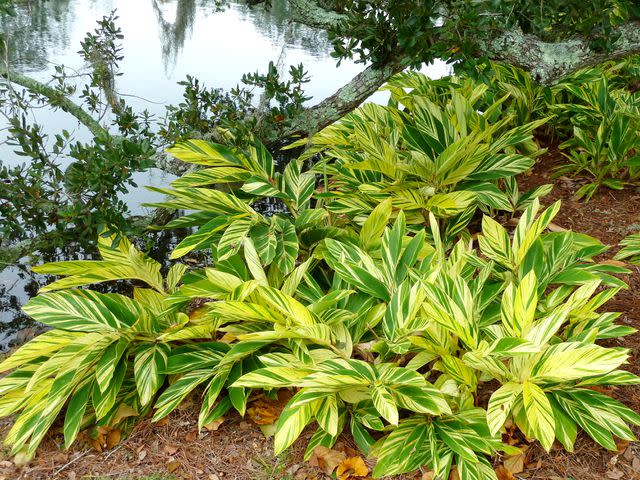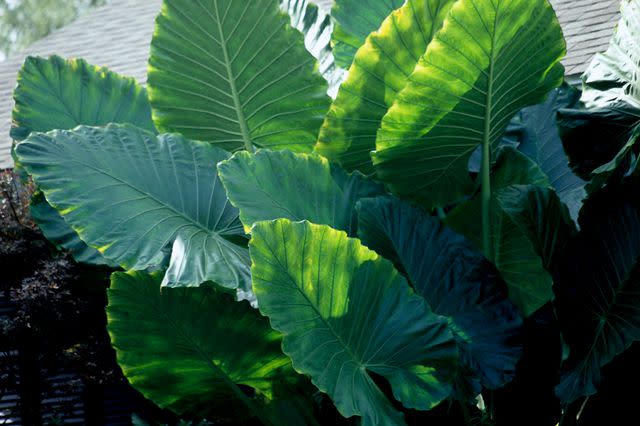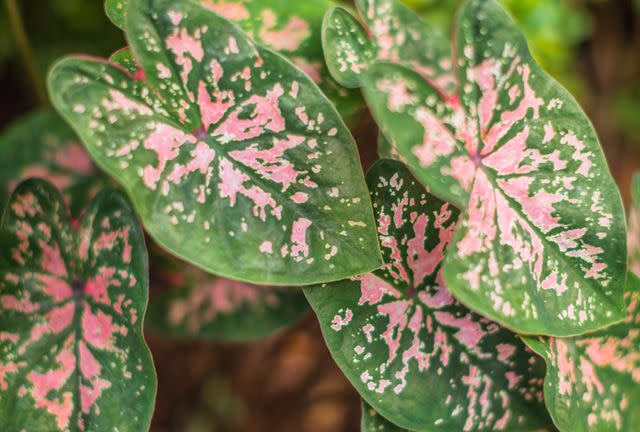How to Plant and Grow Root Beer Plant
Grow root beer plant for its fragrant foliage that smells like root beer soda.
Root beer plant is a Central and South American native plant that grows as a large perennial or shrub in Hardiness Zones 8-11. This fast-growing plant provides a unique texture to the part-shade garden owing to the matte texture of the light-green foliage. The pleasant fragrance of the leaves comes from safrole, a chemical also found in the sassafras tree. The plant also produces arching white flower spikes that offer additional interest. Here's what you need to know to successfully grow root beer plant in your garden.
Where to Plant Root Beer Plant
In their native habitat, root beer plants can grow up to 20 feet tall. They attain more modest heights of 2-10 feet in the garden setting, depending on yearly weather conditions, so situate this plant where it will have enough room to reach its full size. Place root beer plant where the dramatic, heart-shaped, matte-green leaves can warm up a partly shady location (the long, thin white flower spikes are usually considered a secondary but appreciable novelty). A spot close enough to the garden path allows you to rub against the leaves either absently or intentionally to release the sassafras fragrance that earns the plant the common name “root beer plant.”
Root beer plant is invasive in Florida and Hawaii, so check local restrictions before planting. Also, note that this plant contains safrole, which is known to be carcinogenic in animals. It was banned for human consumption by the FDA in the 1960s. All plant parts may be dangerous if eaten by humans and animals.
How and When to Plant Root Beer Plant
Root beer plant can be installed in the garden at any time throughout the growing season in climates that don't freeze in winter. In regions with a seasonal frost or freeze, root beer plant should be installed in spring to allow the plant time to store enough energy to survive winter dormancy and reemerge the next year.
Dig a hole no deeper than the existing root ball and loosen the soil immediately around the planting hole to facilitate root growth. Set the plant in the hole, water generously, and apply a 2-3 inch layer of mulch to help prevent the plant from drying out. Check the soil daily and water as needed until new roots develop. Once the plant has grown new roots, water as needed to maintain soil moisture.
Related: The 7 Best Watering Wands of 2023 to Keep Your Garden Green
Root Beer Plant Care Tips
Grow root beer plant in a warm, partially shaded area that receives adequate moisture. It is root hardy to 10°F and evergreen in regions that don’t receive a frost. It can grow quite large, spreading by suckering rhizomes, and can be grown in a large pot or constricted by a raised bed to limit its spread.
Related: The 11 Best Raised Garden Beds of 2023
Light
This plant grows best in dappled light and part shade but can tolerate full sun with enough moisture. Root beer plants located in full shade may not grow as vigorously and will appear leggy and thin compared to plants receiving more light. The ideal location will receive morning sunlight and afternoon protection from the most intense sun.

weisschr / Getty Images
Soil and Water
Root beer plant is native to the tropical forests of Central and South America and prefers rich soil and regular moisture. Don't allow the soil to completely dry out, but likewise, avoid standing water. The large leaves will droop if the soil becomes too dry, a sign that you should water the plant immediately. Root beer plant is not drought-tolerant and should be grown in a location with easy access to water.
Temperature and Humidity
Root beer plant is considered a die-back perennial in Hardiness Zones 8 and 9. Frost will kill it back to the roots for winter, but it will quickly regrow as the temperatures warm in late spring. In warmer, frost-free climates, expect root beer plant to grow as an evergreen shrub, possibly becoming a small tree. Root beer plant prefers average to high humidity and may struggle in regions with dry air.
Fertilizer
Fertilize root beer plant with a layer of compost in both spring and fall to help support the vigorous growth. Simply topdress the area around the plant with compost and lightly work it into the soil, or top it with a light layer of mulch to help prevent it from being washed away by rain.
Pruning
Root beer plant requires little pruning. Remove damaged and unsightly leaves and stems to maintain a tidy appearance, and remove stems to ground level if the plant grows too tall for the site. The leaves of this plant can be damaged and torn by high winds but stems cut to the ground quickly regrow from the base to fill in bare spots.
Potting and Repotting Root Beer Plant
Root beer plant can be grown in large pots to help constrain the excessive growth, as well as to prolong the growing season in regions where seasonal frosts will kill the plant back to the ground. Simply move the plant to a warm, sunny location indoors when the cool weather arrives and water as usual. Plants that outgrow the pot can be divided and replanted in spring in larger containers.
Pests and Problems
Deer and insects generally avoid this plant. There is evidence to suggest that the licorice scent of the safrole present in the leaves act as an insect repellent.
How to Propagate Root Beer Plant
Root beer plant is easily propagated by separating rhizomes and taking cuttings. Exposed rhizomes will sucker and grow new shoots. Simply root prune a piece of the parent plant with a sharp shovel and transplant it to a new location directly in the ground or into a nursery pot.
Alternatively, take a leaf cutting, complete with a piece of the main stem, and place it into damp potting soil deep enough to support the weight of the leaf. Place the cutting in a warm location in indirect sunlight and water it daily. It should produce roots in 1-2 weeks.
Types of Root Beer Plant
Black Pepper
The fruits of the black pepper vine (Piper nigrum) each contain a single pepper seed. Different preparations yield different products, including green, white, and black pepper. Black pepper is one of the most commonly used spices around the world. It is a slow-growing plant that can be grown as a tropical houseplant.
Long Pepper
The minuscule dried fruits inside the long pepper (Piper longum) catkins taste similar to black pepper. It is used in Indian, Nepalese, Indonesian, and Malaysian cooking. It is often labeled pippali when sold as a spice.
Root Beer Plant Companion Plants
Shell Ginger

Denny Schrock
The upright and strappy texture of variegated shell ginger proves a unique and colorful companion to root beer plant where the glossy sheen of the leaves is in sharp contrast to the mound of matte foliage billowing out of the ground.
Elephant’s Ear

The large leaves of the root beer plant are dwarfed by the massive scale of elephant’s ear foliage. This intense display of green provides an exciting tone-on-tone focal point in the part shade garden.
Caladium

Bob Stefko
The wide selection of caladiums, arriving in various patterns of greens, whites, and reds, provides ample opportunities for dramatic or subtle pairings in the garden.
Frequently Asked Questions
Is root beer plant actually used to make root beer?
No, the flavor in root beer soda does not come from the root beer plant. The name of the plant only refers to the similarity of its fragrance to the drink.
Is root beer plant edible?
Root beer plant contains safrole, a known carcinogen in animals. Safrole is also found in the sassafras tree and Japanese star anise. While it is true that some cultures use root beer plant as an ingredient in cooking, it is best to stay safe and simply enjoy the memorable fragrance without sampling the taste for yourself.
For more Better Homes & Gardens news, make sure to sign up for our newsletter!
Read the original article on Better Homes & Gardens.

